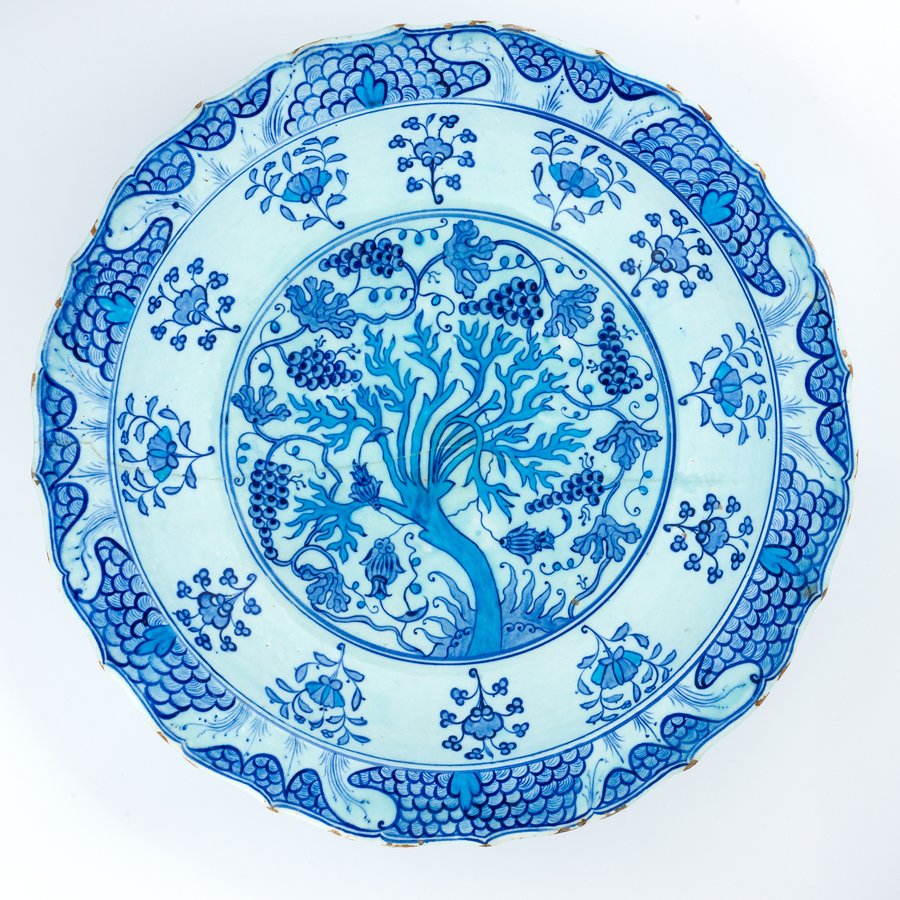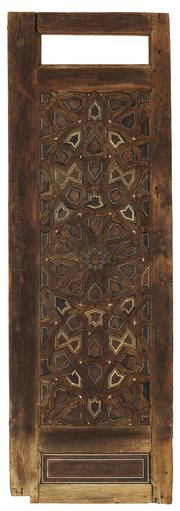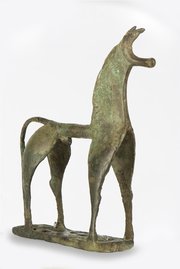
Dish
Museum of Islamic Art
- Title:
- Dish
- Production place:
- Iznik
- Date:
- 1530 - 1535
- Period:
- Ottoman
- Title:
- Dish
- Production place:
- Iznik
- Date:
- 1530 - 1535
- Period:
- Ottoman
- Material:
- Fritware, Pigment, Glaze
- Technique:
- Underglaze painting, Glazing
- Dimensions:
- 8.0 cm
- Diameter:
- 45.5 cm
Iznik pottery is named after the town of Iznik, in western Anatolia (modern day Turkey), where it was initially made. It started being produced during the reign of Ottoman Sultan Mehmed II (r. 854-886 AH/1451-81 CE), whose appreciation for fine blue and white Chinese Ming porcelains inspired him to start making similar ceramics. This large circular blue and white dish, probably produced between 936- 942 AH/1530 35 CE, is considered to be an earlier example of Iznik production, as many Chinese influences are clearly seen. The borders of this dish are slightly cusped and decorated with a band of stylized patterns of waves and rocks, and the centre contains a large willowy grape tree – its extended branches bearing large hanging grapes – all decorative features strongly influenced by earlier 9th century AH/15th century CE Ming porcelain. A dish of this size and quality, with its delicate shades of blue and crisply executed lines, would have most certainly been displayed in a wealthy Ottoman household.



